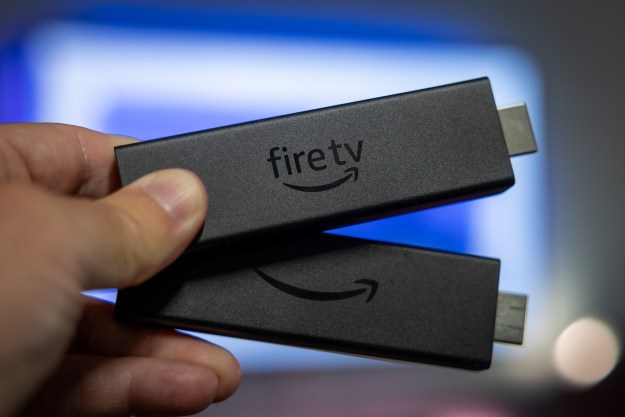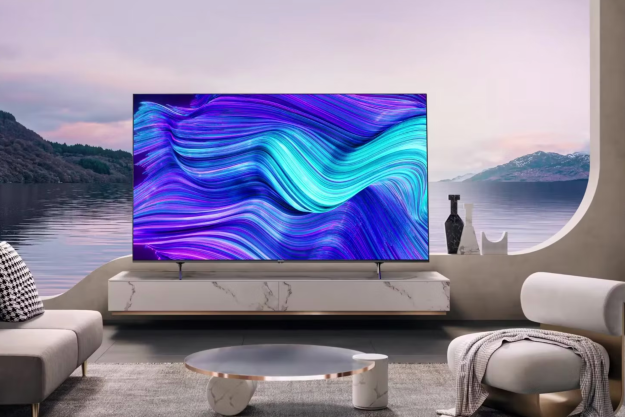
“Yamaha’s HPH-MT8 sound excellent and feel even better, making the studio headphone a great option even if you’ll never see a vocal booth.”
- Detailed and brilliantly balanced sound profile
- Impressive passive noise isolation
- Simple, classic design
- More comfortable than they have a right to be
- No mic or in-line controls
If you’re a listener who favors flat sound and extreme durability over flashy looks, earth-shattering bass, and advanced control mechanisms, when it comes to headphones you’re probably looking for what the industry refers to as the “studio monitor” variety.
Designed for use by professionals in the audio recording world, studio monitor headphones are purpose built for tracking and mixing in the studio, with a design that focuses on good sound and durability over turning heads and taking phone calls.
Yamaha’s HPH-MT8 headphones are a fantastic embodiment of this ethos. With a simple aesthetic, honest sound, and premium build quality, the MT8 are a reliable audio sidekick that never let us down in testing. The
Out of the Box
The MT8 come in a simple white cardboard box, packed with two detachable 2.5mm to 3.5mm audio cables — a 1.5-meter coiled cable, and a 3-meter straight cable — as well as a gold plated quarter-inch adapter, and a faux leather carrying case. An instruction manual is also included, though it’s not really necessary for plug-and-play headphones like these.
Features and Design
Despite their large, robust over-ear design, the studio-black color scheme keeps the MT8 headphones looking decidedly unassuming up close. The only flashy design elements are a pair of shiny logos on the back of each earcup, and two thick silver brackets that hold them in place. There’s also a glossy black Yamaha logo across the top of the headband, but it’s barely noticeable unless you’re really looking for it.
Comfort was obviously a top priority for the designers. The earpads feel like they were cut from the front seat of Grandpa’s old Cadillac, matched by a thick and equally supple upper band, making the MT8 among the most comfortable headphones we’ve put on for long-term listening. We had no problem powering through long recording sessions and full office days alike with the MT8, experiencing virtually none of the long-term fatigue that is typical even of many studio-focused
One cool design feature is that each earcup swivels forward and backward and folds up for storage. This allows everyday listeners, DJs, or studio musicians who need to hear in-person instructions to easily pop off an earcup without taking the whole headset off.
The inclusion of the two different headphone cables is also a welcome addition. The shorter coiled cable gives plenty of length when needed while staying out of the way when it’s not, and on the occasion you need even more length (as we did when tracking drums in our home studio), the longer straight cable is an easy swap from the bottom left earphone, where they twist to lock into place. The quarter-inch cable adapter is of the screwed-on type, giving it a more uniform look when you need it, and assuring it won’t easily pop out.
The one drawback is the lack of any inline controls or microphone on either cable, but that’s true of the vast majority of studio headphones we’ve come across.
Audio Performance
The first thing you’ll notice about the MT8’s sound profile is its extreme precision. Every element of the sound — from boomy bass to shimmery treble — occupies a distinct place, and is evenly shaped in the soundstage by the 45mm dynamic drivers. This is obviously important for studio use, as engineers and musicians don’t want headphones that hide blemishes in the mix due to traits like an excessively thick lower register, or a fuzzy midrange.
Every element of the sound — from boomy bass to shimmery treble — occupies a distinct place.
In keeping with this level of sonic honesty, the least exciting music through the headphones is boomy Southern rap — a genre that relies heavily on low-end punch. When listening to songs like Migos’ Bad and Boujee, the MT8 lack the kind of exaggerated sub-bass response you’ll get from many Beats-era over-ears. Instead, they provide tighter and punchier bass response, sneaking in the boomy sub-bass frequencies with an elegance that is beyond what the genre really demands. They still give you the same great vocal clarity and digital percussion sounds up top, but these
The most compelling music to hear over the MT8 headphones is stereo-mixed rock and acoustic music, as they’re able to reproduce the natural sounds of various instruments and their place in the soundstage clearly and precisely.
When listening to the remastered version of The Beatles’ Here Comes The Sun, the gorgeous acoustic tracks poke out in the left earphone, with round backing vocals coming from the right, and bass and drums holding everything together in the middle. The same was also true of The Who’s Baba O’Reilly, where the sharp and spacey synth tones feel almost three dimensional in your ears.
Apart from recreational listening, we had great results mixing with the MT8 headphones in a home studio setting, with songs sounding balanced even when compared with the performance of higher-end monitor speakers. Subtle EQ work is still easily audible through the cans, and helped us realize just how well-voiced the
Our Take
The Yamaha HPH-MT8 headphones are a no-frills, durable set of over-ears with excellent sound reproduction for the money, easily providing some of the best all-around sonic performance at their price point, and adding in an extremely comfortable fit, to boot.
Is there a better alternative?
There are many classic studio headphones within the $100 to $200 price point that are also worth investigating. On the low end, Sennheiser’s HD280 Pro and Beyerdynamic’s DT770 Pro are excellent options that don’t quite offer the same sound quality, but match the MT8 in comfort and durability. On the high end, AKG’s open-backed K 701 sound excellent, but don’t offer the same sound isolation as the Yamaha.
How long will it last?
These headphones are built for the daily studio grind, and should therefore last for many years of constant use if treated correctly.
Should you buy it?
Yes. If you’re looking for a simply appointed set of over-ears that are incredibly comfortable, and pack the goods where it counts, the Yamaha HPH-MT8 headphones are an amazing option for the money.








